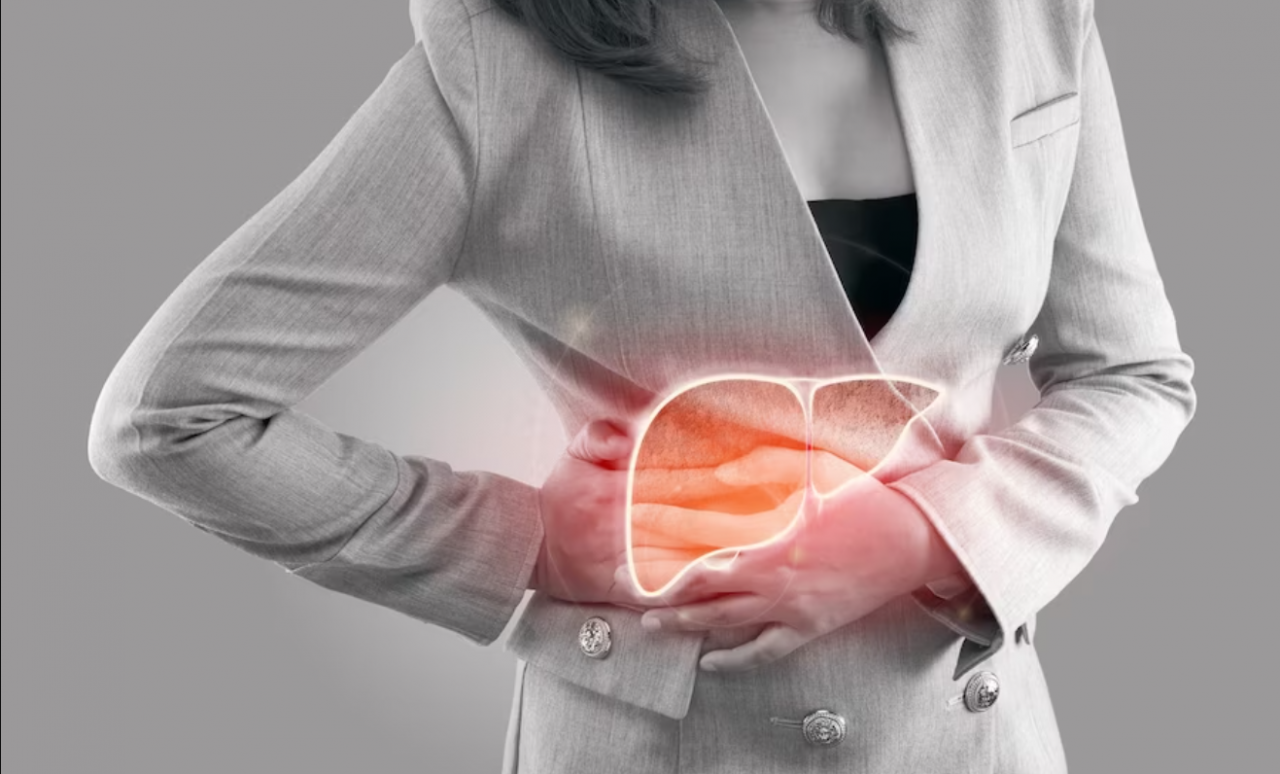Nonalcoholic fatty liver disease (NAFLD), now called metabolic dysfunction-associated liver disease (MASLD), is the build-up of extra fat in liver cells that is not caused by alcohol. It is normal for the liver to contain some fat. However, if more than 5% – 10% percent of the liver’s weight is fat, then it is called a fatty liver (steatosis). The more severe form of NAFLD is nonalcoholic steatohepatitis (NASH), (now called metabolic dysfunction-associated steatohepatitis or MASH). NASH (now called MASH), causes the liver to swell and become damaged.
Finding out you have nonalcoholic fatty liver disease (NAFLD) can be daunting but watch how Shawanna met the challenge head on and is reversing her diagnosis with weight loss, healthy eating and exercise!
Facts at-a-Glance
- About 100 million individuals in the United States are estimated to have Nonalcoholic Fatty Liver Disease (now called metabolic dysfunction-associated steatotic liver disease).
- Nonalcoholic Fatty Liver Disease (NAFLD), now called metabolic dysfunction-associated steatotic liver disease or MASLD, is the most common form of liver disease in children and has more than doubled over the past 20 years.
Information for the Newly Diagnosed
Who is likely to have Nonalcoholic Fatty Liver Disease (NAFLD)?
Nonalcoholic fatty liver disease (now called metabolic dysfunction-associated steatotic liver disease) tends to develop in people who are overweight or obese or have diabetes, high cholesterol or high triglycerides. Rapid weight loss and poor eating habits also may lead to nonalcoholic fatty liver disease (now called metabolic dysfunction-associated steatotic liver disease).
However, some people develop nonalcoholic fatty liver disease (now called metabolic dysfunction-associated steatotic liver disease) even if they do not have any risk factors. Nonalcoholic fatty liver disease (now called metabolic dysfunction-associated steatotic liver disease) affects up to 25% of people in the United States.
What are the risks?
Nonalcoholic fatty liver disease (now called metabolic dysfunction-associated steatotic liver disease) may cause the liver to swell (steatohepatitis). A swollen liver may cause scarring (cirrhosis) over time and may even lead to liver cancer or liver failure.
What are the symptoms?
Nonalcoholic fatty liver disease (now called metabolic dysfunction-associated steatotic liver disease) often has no symptoms.
When symptoms occur, they may include fatigue, weakness, weight loss, loss of appetite, nausea, abdominal pain, spider-like blood vessels, yellowing of the skin and eyes (jaundice), itching, fluid build up and swelling of the legs (edema) and abdomen (ascites), and mental confusion.
How is it diagnosed?
Nonalcoholic fatty liver disease (now called metabolic dysfunction-associated steatotic liver disease) is initially suspected if blood tests show high levels of liver enzymes. However, other liver diseases are first ruled out through additional tests. Often, an ultrasound is used to confirm the NonAlcoholic Fatty Liver Disease diagnosis.
How is it treated?
There are no medical treatments yet for nonalcoholic fatty liver disease (now called metabolic dysfunction-associated steatotic liver disease). Eating a healthy diet and exercising regularly may help prevent liver damage from starting or reverse it in the early stages.
- See a doctor who specializes in the liver regularly
- Talk to your doctor about ways to improve your liver health
- Lose weight, if you are overweight or obese
- Lower your cholesterol and triglycerides
- Control your diabetes
- Avoid alcohol
How can it be prevented?
There are ways to prevent nonalcoholic fatty liver disease:
- Maintain a healthy weight
- Eat a healthy diet
- Exercise regularly
- Limit alcohol intake
- Only take medicines that you need and follow dosing recommendations.
Questions to Ask Your Doctor
- What condition do I have that suggests NAFLD (now called MASLD)?
- Can NAFLD (now called MASLD) be reversed? How long can this process take?
- Do I have cirrhosis or scarring of the liver?
- If I do have cirrhosis – how far has the scarring progressed?
- What kinds of lifestyle changes and diet can I make?
- Would it be possible to be connected to a registered dietitian or nutritionist to make a specific meal plan?
- What kinds of physical activities would be OK for me to do?
- Is there a treatment or medication for NAFLD (now called MASLD)? Are there any clinical trials?
- Will losing weight help me to get rid of this disease?
Support Group
NASH (now called MASH) Support Group on Facebook
Visit the American Liver Foundation Nonalcoholic Steatohepatitis (NASH), now called metabolic dysfunction-associated steatohepatitis or MASH, support group on Facebook. For more details, click here…
Sources:


